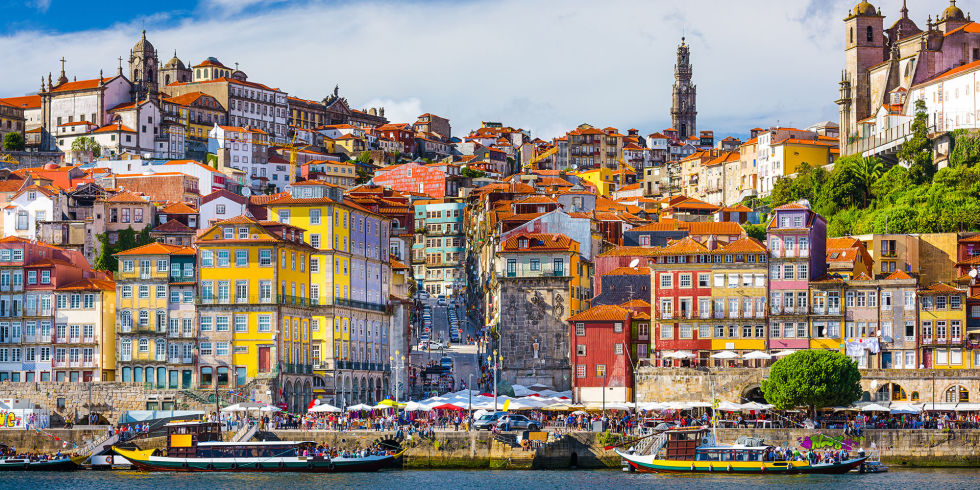A new year means new holidays to book and new destinations to see. If you’re searching for good culture, food and nightlife, but don’t want to revisit the old tried-and-tested cities, then see our guide of the buzziest European destinations in 2018 that haven’t been overrun by tourists yet. Make a beeline now before everyone else does.
Belgrade, Serbia

Neighbouring music festival Exit has shone a light on Belgrade as a city break destination over the past few years, but the affordable Serbian capital still remains largely a travel secret, despite its buzzing restaurant scene and achingly cool Supermarket Concept Store (designed to replicate the stripped-back socialist design style). Go in the summertime where locals party on boats moored on the Danube and Sava rivers by night and relax at the Kalemegdan park outside the Belgrade fortress by day. If you have longer than a weekend to explore, take the Belgrade Bar Line to Montenegro and take in truly beautiful vistas of hills, mountains and lakes.
Riga, Latvia

The cosmopolitan city of Riga is known for its sunny squares, cobbled lanes and historic gothic buildings, as well as being home to the lively, artsy district of Miera Iela – which translates as Peace Street. Indeed, it’s easy to feel calm here amid the kitsch, dimly lit bars, antique stores, chocolate shops and coffee shops.
Porto, Portugal

In 2017, Lisbon became the place to travel to for discerning hipsters, and yet Portugal’s second city, Porto, is just as an attractive proposition – just less hectic. Similarly to Lisbon, this port-side destination offers a laid-back, bohemian nightlife, cobbled streets, affordable, delicious restaurants and airy modern art museum. Try the Candelabro, a bookshop specialising in cinema and photography, with a bar in which to read your wares afterwards – possibly with a glass of port in hand.
Matera, Italy

Matera is the third oldest inhabited settlement in the world, after Aleppo and Jericho. Despite its relative recent poverty, the city – situated in Southern Italy – has been named 2019 Europe’s Capital of Culture. It is most famous for its caves that perched on a ravine, which were up until only 70 years ago were humble homes of farmers and peasants with no natural light, ventilation, running water or electricity. Times have changed and the caves are currently filled with bars, hotels, Airbnb lets, restaurants and shops. Go now before it becomes inundated with tourists.
Warsaw, Poland

Warsaw was largely decimated following World War II, not that you’d know it from its picturesque historical centre – the only giveaways are the subtle ‘1954’ date embossed into many facades and walls, the year that the reconstruction began. Today, this gritty city has a hedonistic, lively energy and a buzzing nightlife –Warszawa Powisle. a small former railway station-turned-bar, is a good example. The city’s dark history is well explored in multiple local museums, although the Neon Museum – based in an old warehouse – looks at a different chapter in Warsaw’s story, namely iconic signs from the communist era.
Vienna, Austria

A little island in the middle of Vienna’s Danube canal, Leopoldstadt challenges the idea that the city is only famous for classical music and beautiful buildings. The Austrian capital has entered the fore this year thanks to its Viennese Modernism celebrations, but that’s not all it has to offer. Former Jewish district Leopoldstadt, or more specifically the area around Praterstrasse and the Karmeliterviertel. Is a diverse locale, populated by young artists, as well as Turkish and Balkan immigrants. Expect local markets, excellent coffee shops (Supersense sells records as well as hot drinks), good foodie spots (Fett+Zucker for cake and Skopik & Lohn for modern Viennese dining), a giant retro Wiener Riesenrad Ferris wheel and a chic concept store-meets-exhibition space called Song.
Hamburg, Germany

Step aside Berlin, there’s a new buzzy German city to take note of. Boasting the country’s biggest port, Hamburg is home to an interesting mix of architecture, for example its new concert hall, The Elbphilharmonie, an old brick warehouse with a shimmering, rippling roof – a brilliant juxtaposition of old and new. For nightlife, there’s the intriguingly seedy Reeperbahn district, while shoppers will be won over by the Flohschanze flea market, which offers a mix of records, vintage clothes and old books. Sternschanze, or simply ‘Schanze’, is another beguilingly bohemian area, full of restaurants, bars, cafes and street art, popular with young creative locals.
Lausanne, Switzerland

When it comes to counterculture, Lausanne – most famously known for being home to the International Olympic Committee – is unlikely to be first to spring to mind. Situated on the shores of Lake Geneva and overlooking the renowned Evian mountains, this compact Swiss town has a rising arts scene based around its Le Flon district. Its industrial architecture, vibrant food offering and array of bars (including a craft brewery whose woke catchphrase is ‘fuck neutrality’) have made it an attractive proposition for those who want a lively short-haul city break without too much traipsing around.












